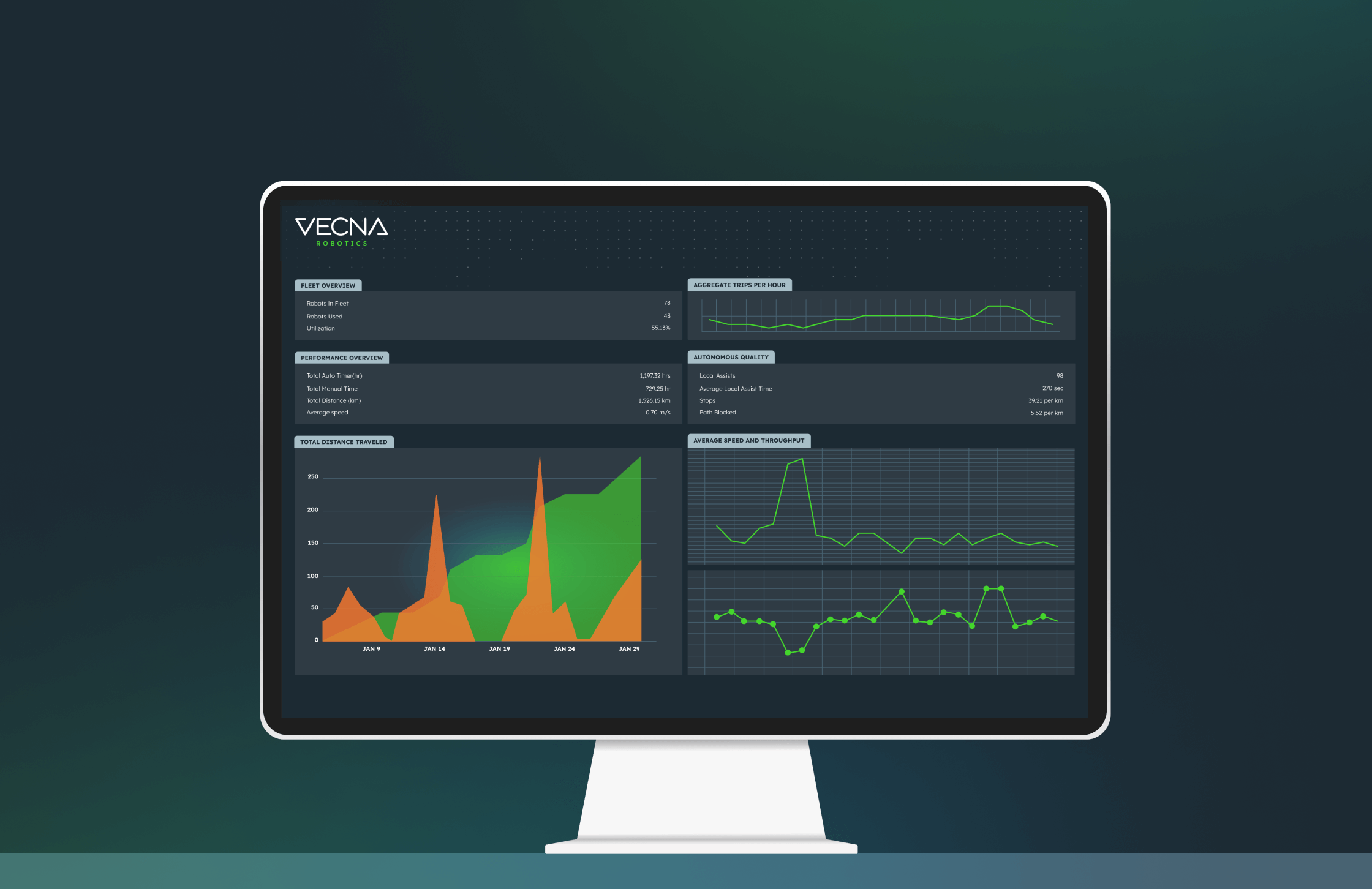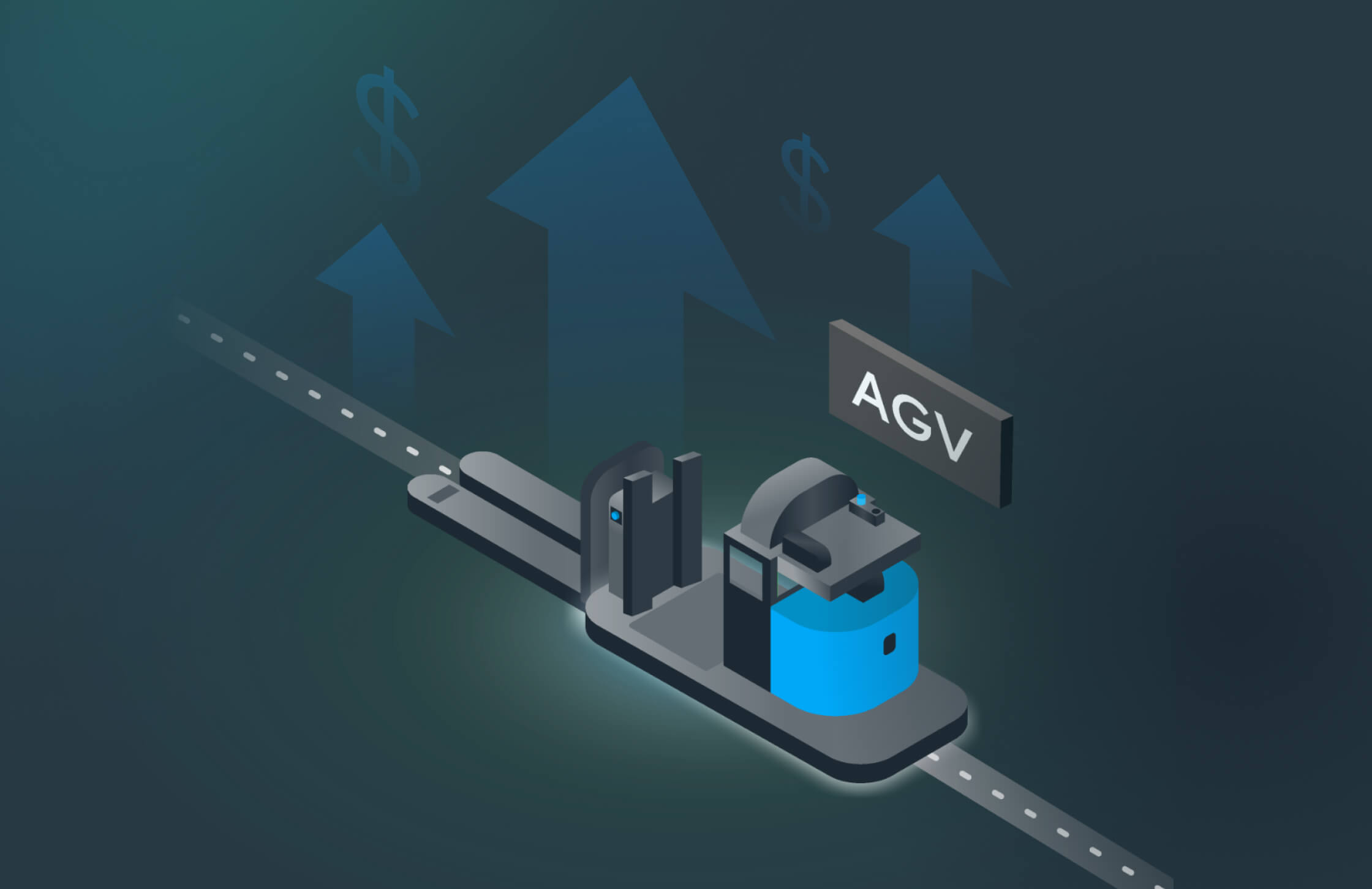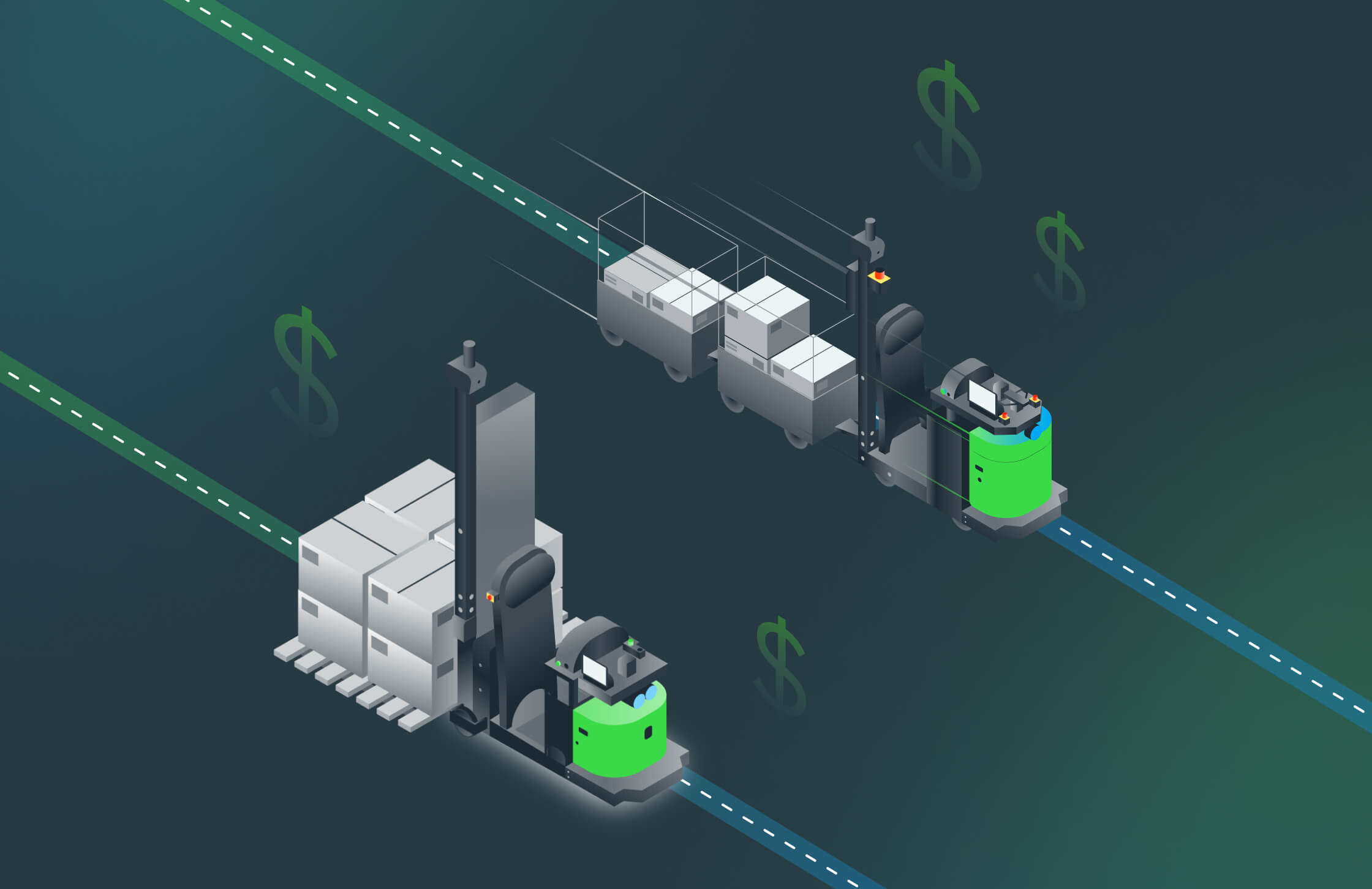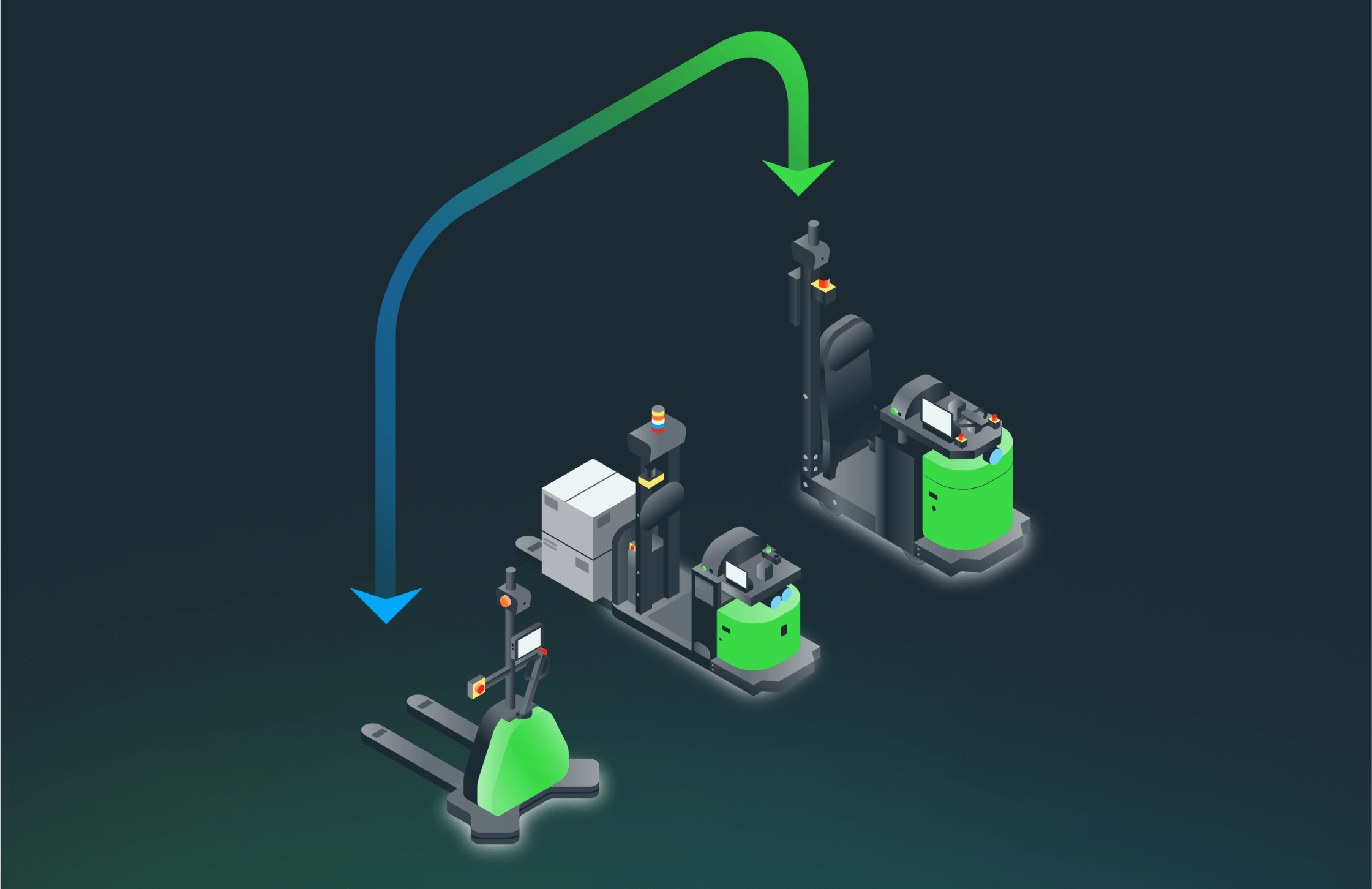Last month, we published an article talking about the history of the Robot-as-a-Service (RaaS) pricing model, what it is, and how it’s relevant to the high-capacity AMR and AGV industry. This month, we explain the connection between the Industrial Internet of Things (IIoT) cloud-based architecture and a RaaS model.
Like a Software-as-a-Service (SaaS) model, RaaS is a cloud-based solution. For instance, in a typical RaaS deployment for our Pivotal orchestration engine, the application is released to the cloud or in secure off-site servers. Pivotal tracks the real-time status of each robot in its fleet, including truck location, task type, estimated pickup or drop-off time, and traffic in its proximity. Through secure integration, the facility’s WMS or MES assigns work to the application. Then, the application uses fleet status information to dispatch the right robot to the right job. Pivotal then presents that information on an enterprise dashboard, allowing for continuous improvement.
IIoT Architecture Suited to Scalability and Expansion
In a traditional pricing model, adding robots to an existing application can require extra work. Under RaaS, it is easy to scale a fleet and expand with new AMR models with minimal intervention from your vendor, based on the changing needs of your operation. Whether you decide to use 1 or 100 robots, we install infrastructure at your facility the same way. Increase fleet size easily, without an additional lengthy deployment process. In addition, you can swap out old equipment as updated hardware becomes available, or even change truck types based on changing needs and workflows. For example, a warehouse might swap pallet jack for a counterbalanced fork truck if they discover a bottleneck at the stretch wrap machine.
Expansion to Mixed Fleets
However, the real power of Pivotal lies in its ability to expand across platforms and human agents, and from one facility to multiple facilities. A cloud-based RaaS architecture makes it easy for facilities to:
- share robots amongst facilities,
- employ mixed fleets of AMRs and AGVs from a variety of vendors, and
- assign missions to human operators.
A RaaS pricing model calls for a cloud-based IT infrastructure. As a cloud-based solution, Pivotal allows for future expansion from a fleet of AMRs operating alone to mixed fleets of AMRs and AGVs from a variety of vendors communicating with people, and equipment like Smart I/O Boxes.
(Check out this white paper we wrote with SVT Robotics to see how we’re making mixed fleets possible.)
The Power of RaaS Pricing and 5G in IIoT
The RaaS model and 5G connectivity are major players in the future of IIoT. Next-generation industrial automation systems, like autonomous mobile robots, are intelligent, connected devices that rely on:
- large amounts of data and analytics
- computation-heavy, real-time processing such as 3D vision perception, simulation, dynamic optimization, and machine learning
- persistent wireless connectivity and M2M communication between large amounts of devices
- software-driven devices that consistently improve via OTA updates
Historically, these systems face consistent challenges. Warehouses and factories usually have on-premise IT systems and are located in remote areas without access to high-speed internet. As a result, these facilities typically have limited WiFi bandwidth and strict security policies. 4G signals often do not provide reliable connection inside plants and lack enough bandwidth for data-hungry processing like real-time vision.
5G provides a standard, secure, reliable wireless infrastructure for next-gen automation and Industrial Internet of Things applications. Vecna Robotics has partnered with Verizon 5G Studios and Newlab to demonstrate a streamlined cloud-based architecture and deploy systems more rapidly. RaaS inherently sets up the industrial infrastructure for the fastest, most reliable, most current, and most secure installation possible.
Find more information about RaaS and Vecna Robotics’ approach to OpEx pricing here.






